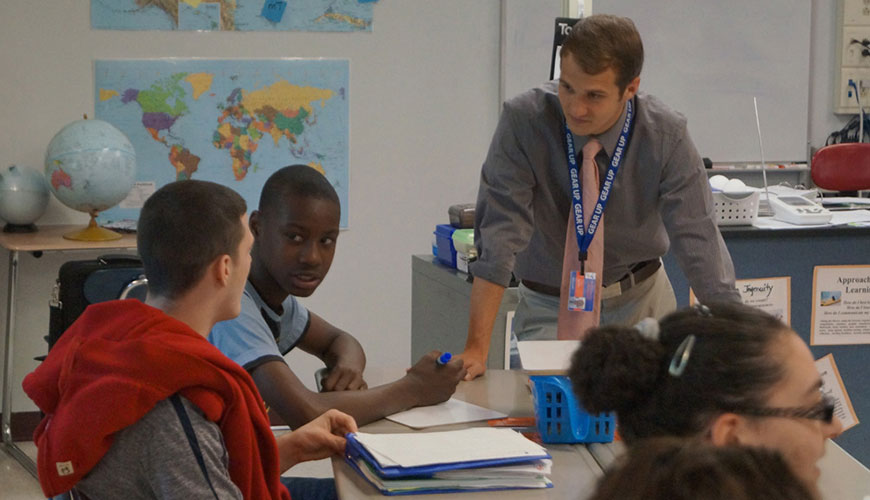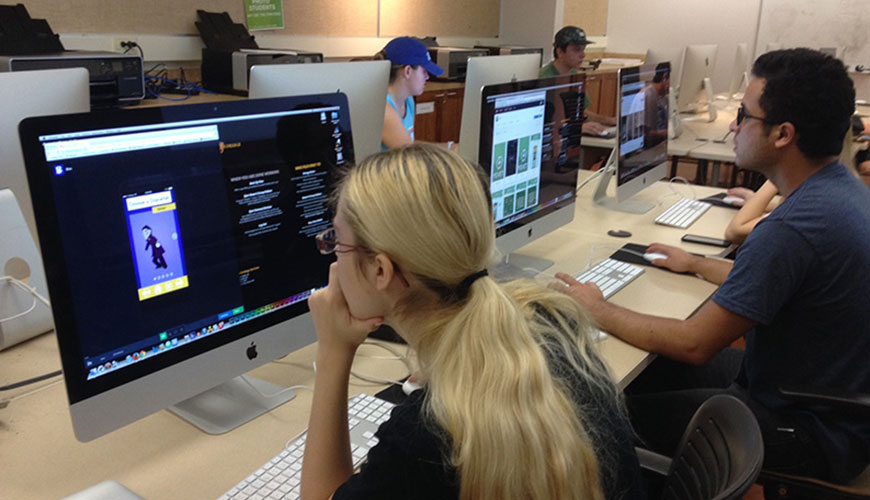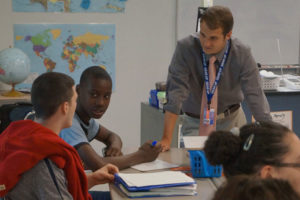Classroom entertainment
Kids are not ambivalent when it comes to video games: They love them. Young boys, especially, have been pouring quarters into slots since Computer Space, the first commercial arcade video game, appeared nearly thirty-five years ago. While pixelated hits like Pong, Space Invaders, Pac-Man, and Donkey Kong first stole gamers’ hearts, less glamorous educational titles, like Oregon Trail (1974) and Where in the World Is Carmen Sandiego? (1985), have held their own.
But there’s one kind of game that nobody’s succeeded in making for the insatiable throngs of game groupies: a blockbuster hit for the classroom.
Instead, school districts, eager to be perceived as plugged in and afraid of being penalized for low test scores, have bought into expensive drill-and-kill software — the kind that costs a fortune and displays a silly animation of fireworks or cheering crowds for every five correct answers — with only minimal improvements on test scores and scant evidence of long-term progress among students. Most administrators approach new game-software purchases with skepticism and a reluctance to spend money.
Meanwhile, the video game world has blossomed into a gargantuan $7-plus-billion-a-year industry. Kids (and their teachers, it turns out) spend more time per week blowing up aliens than watching television or (no surprise) doing homework. Although the so-called edutainment software titles, like the Blue’s Clues and Dr. Seuss series, make up a relatively small portion of the market, academics, teachers, and entrepreneurs are working to transform a couch potato pastime into a curriculum staple. They’re almost there.
Power Up
Video games can do a lot of things that traditional teaching cannot. As Squire’s class showed, they can get unmotivated students fired up about — can it be? — ancient history. Games can also be an effective way of reaching students who haven’t responded to conventional teaching methods, and they can get gifted students to apply critical-thinking, problem-solving, and other higher-level skills to subjects they already know.
It’s not just especially low- or high-performing kids who benefit, says David Gibson, codirector of the SimSchool PT3 Project, a Vermont-based organization that develops a desktop game to train future teachers for the classroom. He believes games may be the key to “stealth education,” whereby all kids have such a good time that they don’t realize they’re also learning (see “Games: Not Just Child’s Play,” below). “Education will be so much fun because it will be played and enacted,” Gibson says.
So far, the data looks promising. “The whole point behind our research was to see if we could design games that would help the bottom third of students, students that even by middle school have given up on themselves and on school,” explains Chris Dede, the Timothy E. Wirth Professor in Learning Technologies at the Harvard Graduate School of Education.
In a 2002 pilot study involving three middle school classrooms in Boston, Dede found that students who played his game River City surpassed the test group in three areas: They were more motivated to do the work, performed better on postlesson tests, and tended to look to their teachers to facilitate rather than give direction. “We see real hope in the early results from our research,” Dede says, adding that he’s not blindly committed to making video games succeed in the classroom. “Our goal is to see how much it’s worth investing in,” he says.
The DIY Approach
Instead of developing elaborate games for kids to play in the classroom, some pioneering teachers and researchers have found that having students design their own games is a great way to reinforce a lesson or connect it to other skills and ideas. That was the approach Yasmin Kafai took while under a no-strings-attached grant from Nintendo to develop an educational video game in the early ’90s at the Massachusetts Institute of Technology.
“Everyone thought we’d develop the perfect educational video game,” recalls Kafai, now an associate professor at the Graduate School of Education and Information Studies at the University of California — Los Angeles. After interviewing game enthusiasts (ranging from six-year-olds to adults) about what the perfect formula might be, she began to wonder whether players might design a better game than she could.
So she tried it. A Boston fourth-grade math class was provided with some basic software, designed by Kafai, and assigned the task of creating a program to teach fractions to third graders. Kafai’s goal was modest: to see if it is possible to combine a math lesson with a computer-skills lesson — classic stealth learning. While the games themselves weren’t visually outstanding, the kids who created them learned fractions and computer skills simultaneously, and they had fun creating flourishes like elaborate punishments and rewards for answers.
This approach, however, puts a lot of pressure on the teacher. Mary Karl, the coordinator for gifted and talented students at Forest Glen Elementary School, in Green Bay, Wisconsin, has her class write math games for other kids using MicroWorlds software. The student designers reinforce their knowledge of decimals and time and develop strategic and problem-solving skills. The kids who are behind then get to reinforce their own skills by playing the game. But, says Karl, “to navigate back and forth between the math of fractions and what kids are doing on the computer requires a teacher who feels very comfortable on both levels.” An educator like that might be hard to come by. An off-the-shelf video game might be easier to work with.








